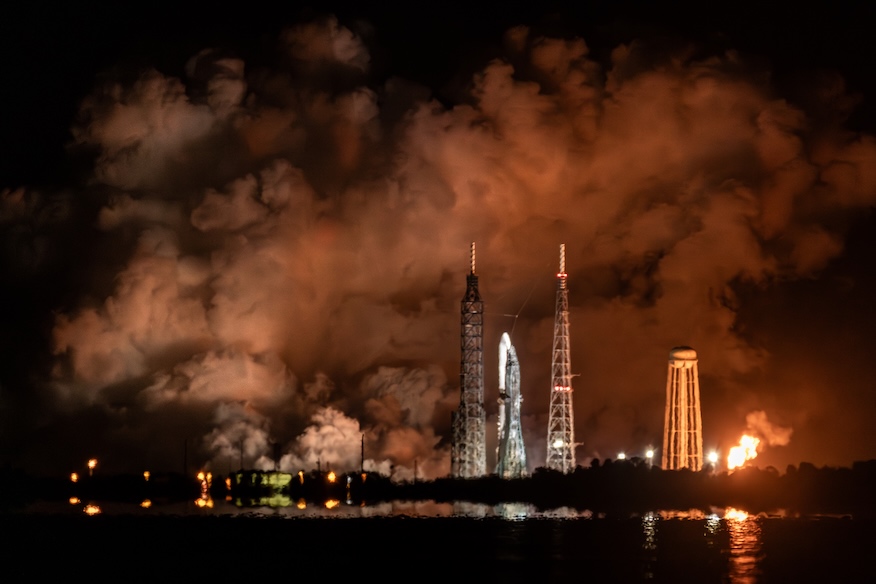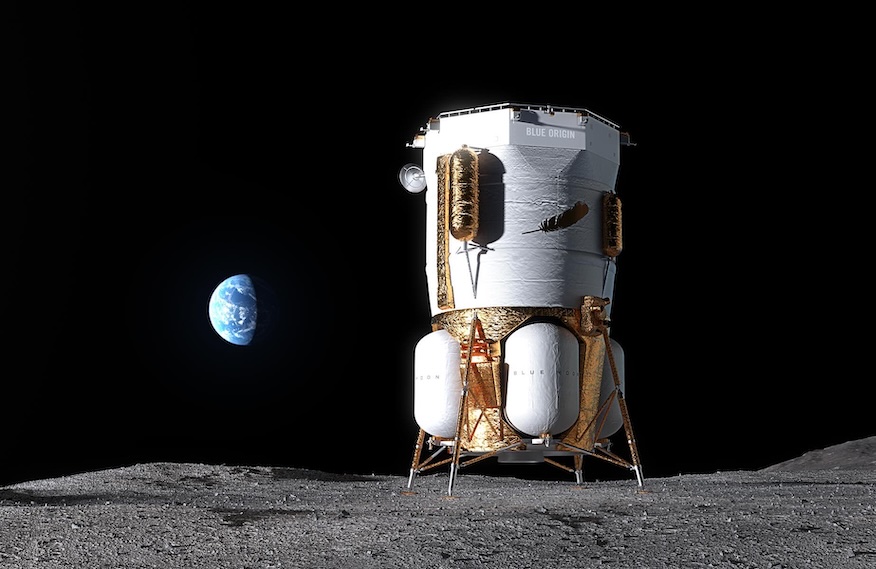
Blue Origin lit up a pocket of Florida’s Space Coast Thursday night when it hot fired its New Glenn rocket for an engine test lasting roughly 40 seconds in duration.
The test at Launch Complex 36 at Cape Canaveral Space Force Station began at about 9:59 p.m. EDT (0159 UTC) and came more than an hour after what appeared to be a brief ignition and then shutdown after activating the water-based sound suppression system at the pad.
The ignition of the seven BE-4 engines was an important milestone as the company founded by billionaire Jeff Bezos is preparing for the launch of its first NASA mission in the days or weeks to come.
.@blueorigin completed a roughly 40 second static fire of its New Glenn rocket with T-0 occurring around 9:59 p.m. EDT (0159 UTC). This was one of the big milestones before launching NASA’s EscaPADE mission from Cape Canaveral Space Force Station. pic.twitter.com/5Q28vi1JSl
— Spaceflight Now (@SpaceflightNow) October 31, 2025
The more than 320-foot-tall (98 m) tall rocket will launch a pair of twin spacecraft on a journey to Mars. NASA’s Escape and Plasma Acceleration and Dynamics Explorers (EscaPADE) mission is the “first multi-spacecraft orbital science mission to the Red Planet,” as described by the agency.
This was just the third time that Blue Origin has ignited its booster at Launch Complex 36 at Cape Canaveral Space Force Station. It completed a hotfire test back in December before launching its first New Glenn rocket with a pathfinder for its Blue Ring spacecraft in January.
Like with the first launch, Blue Origin will once again attempt to recover the booster through a propulsive landing on the barge named “Jacklyn” in honor of Bezos’ mother. According to the Federal Aviation Administration, the booster used on New Glenn 1 (NG-1) mission, named ‘So You’re Telling Me There’s a Chance’, failed to relight its engines, causing it to not be recoverable.
Blue Origin is banking on the second booster, named ‘Never Tell Me the Odds’, will have a better fate. If it is able to be recovered successfully and refurbished, the company plans to fly it on its third mission, which will carry its first Blue Moon Mk. 1 lander.
The cargo variant of Blue Origin’s robotic lander will aid in the development of a crewed version, which is contracted to fly on the Artemis 5 mission for NASA.





On the “There’s Only One of Me but sure outta be more!” effort we all roll on! Together!